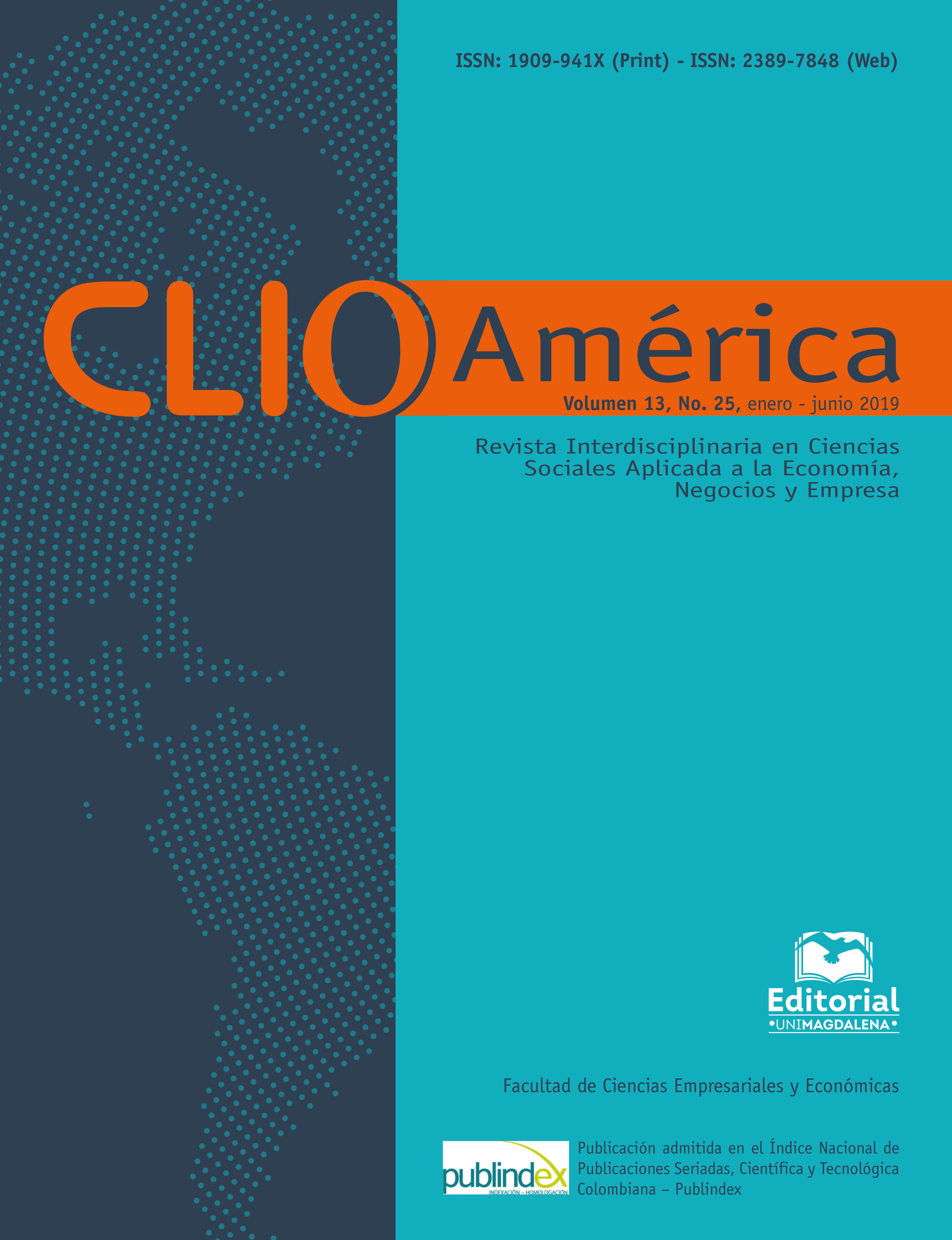Abstract
The research follows a mixed approach; and aims to design a structural model that identifies explanatory variables in the process of purchasing crafts and medicinal plant extracts from the Inga community. Using the ethnographic method in qualitative research and using elements of the factorial and correlational design, based on the structural equation model (SEM) of the quantitative approach, instruments are implemented for interviewing, observing and surveying a sample made up of 500 passers-by who consume natural products and 280 members of the Inga community in the municipality of Cúcuta-Colombia. The results allow us to identify emerging categories such as participatory territorial planning, context, equality of rights, sustainable production, organization, research and innovation, marketing, training as a natural investment, as well as, within an environmental investment, factors of human talent capacity, use of ancestral practices, social factors, product, affection, technology; all of which affect consumer behavior as an irruption of the social order. It is concluded that, from the logit model, the cultural representation influenced by the consumer's behavior of products in the offer of the tribes is identified.References
Bauman, Z. (2010). Mundo consumo. Barcelona: Paidós. https://www.planetadelibros.com/libro-mundo-consumo/24190
Barbosa, E. M., Gómez, D. T., y Leuro, J. A. (2017). Ecología y bioeconomía. El diálogo de saberes. Clío América, 11(21), 108-119. https://doi.org/10.21676/23897848.2086
D’ambrosio, U. (2008). Etnomatemática: eslabón entre las tradiciones y la modernidad. México D.F: Limusa. http://dct.digitalcontent.com.co/sview/?i=4127&p=1&idtienda=1&token=880D3932-D024-4817-B432-FB46D126946A&code=4937F437-9545-450B-BD5C-43BB1F161777
Duarte, M., Ortega, M., Mora, L. y Coromoto, N. (2011). Un modelo de atención en salud al pueblo wayuu en la frontera colombo-venezolana. Revista Panamericana Salud Publica, 30(3), 272-278. https://scielosp.org/pdf/rpsp/2011.v30n3/272-278/es
García, D. (2012). Etnomatemática de un grupo de niños de la Granja Infantil Jesús de la Buena Esperanza de Pereira. Pereira: Universidad Tecnológica de Pereira. EtnomatematicaDeUnGrupoDeNinosDeLaGranjaInfantilJe-4271776.pdf
Gavarrete, M. H. (2012). Modelo de aplicación de etnomatemática en la formación de profesores para contextos indígenas en Costa Rica. España: Universidad de Granada. http://hdl.handle.net/10481/27806
Guber, R. (2011). La etnografía: método, campo y reflexividad. Buenos Aires: Siglo XXI Editores. http://facultad.pucp.edu.pe/comunicaciones/ciudadycomunicacion/wp-content/uploads/2014/11/Guber_Rosana_-_La_Etnografia_Metodo_Campo_y_Reflexividad.pdf
Hevia, J. (2002). Lenguas y devenires en pugna. Lima: Universidad de Lima. http://www.ulima.edu.pe/publicaciones/lenguas-y-devenires-en-pugna-en-torno-la-posmodernidad
Jaramillo, O. (1984). Condiciones de salud y del medio ambiente de la comunidad indígena barí. Bogotá: Ministerio de Salud.
Jovchelovit, S. (2001). Social representations, public life, and social construction. En K. Deaux y G.Philogène (Eds.), Representations of the social. Bridging theoretical traditions (pp. 165-182). Hoboken, Nueva Jersey: Blackwell Publishing. http://eprints.lse.ac.uk/2649/1/Socialrepspubliclife.pdf
Leininger, M. (1999). Cuidar a los que son de culturas diferentes requiere el conocimiento y las aptitudes de la enfermería transcultural. Cultura de los Cuidados, 3(6), 5-12. http://dx.doi.org/10.14198/cuid.1999.6.01
López, M. (2011). Estrategias de atención en salud a población indígena y su relación con la respuesta social en la ciudad de Medellín Colombia. Medellín: Universidad de Antioquia. https://www.medellin.gov.co/irj/go/km/docs/wpccontent/Sites/Subportal%20del%20Ciudadano/Salud/Secciones/Publicaciones/Documentos/2012/Investigaciones%202011-2012/Estrategias%20de%20atención%20en%20salud%20a%20población%20ind%C3%ADgena%202011.pdf
López, P. (2004). Población muestra y muestreo. Cochabamba, 9(8), 69-74. http://www.scielo.org.bo/scielo.php?script=sci_arttext&pid=S1815-02762004000100012
Marcillo, M. y Zambrano, P. (2010). Determinantes de la participación en el mercado de trabajo. Un estudio para el área metropolitana de Pasto. Tendencias, (11), 75-96. DeterminantesDeLaParticipacionEnElMercadoDeTrabajo-3640460.pdf
Martínez, J., Vergel, M. y Zafra, S. (2016). Comportamiento juvenil y desarrollo de competencias prosociales. Bogotá: Editorial Ibáñez. http://incabook.com/index.php?route=product/product&product_id=6844
Murillo, J. (2010). Investigación etnográfica. México: Trillas. https://fundacionmerced.org/bibliotecadigital/wp-content/uploads/2017/12/I_Etnografica.pdf
Ortiz, N. (2016). Tribus de consumo. Hacia la autosegmentación del consumidor. Correspondencias & Análisis, (6), 121-137. https://doi.org/10.24265/cian.2016.n6.07
Rojas, J., Vergel, M. y Urbina, J. (2019). Imaginarios de educación superior en la juventud sorda. Bogotá: ECOE Ediciones. https://www.researchgate.net/publication/340297052_Imaginarios_de_educacion_superior_en_la_juventud_sorda
Rueda, N., Romero, D. y Gómez, C. S. (2019). Factores que inciden en la aplicación de números racionales en educación básica secundaria en una zona de frontera. Aibi: Revista de Investigación, Administración e Ingeniería, 7(2), 16-19. https://doi.org/10.15649/2346030X.574
Sarrazin, J. P. (2015). Representaciones sobre lo indígena y su vínculo con tendencias culturales globalizadas. Anagramas, 14(27), 163-184. RepresentacionesSobreLoIndigenaYSuVinculoConTenden-5284751.pdf
Salaverry, O. (2010). Interculturalidad en salud. Revista Perú Salud Pública, 27(1), 80-93. http://www.scielo.org.pe/scielo.php?script=sci_arttext&pid=S1726-46342010000100013&lng=es&tlng=es.
Solomon, M. (2008). Comportamiento del consumidor. México: Pearson. https://profesorailleanasilva.files.wordpress.com/2016/06/comportamiento-del-consumidor-michael-solomon.pdf
Spradley, J. (2008). The ethnographic interview. Winston: Universidad de Michigan. https://books.google.com.co/books/about/The_Ethnographic_Interview.html?id=XP5_AAAAMAAJ&redir_esc=y
Suárez, I., Acevedo, M. y Huertas, C. (2009). Etnomatemática, educación matemática e invidencia. Revista Latinoamericana de Etnomatemática, 2(2), 18-51. http://www.etnomatematica.org/v2-n2-agosto2009/suarez-acevedo-huertas.pdf
Vergel-Ortega, M., Delgado, J. y Díaz-Umaña, Y. (2019). Cathedral bell’s San José de Cúcuta: Heritage and acoustics. Journal of Physics: Conference Series, 1329(1), 1-7. 10.1088/1742-6596/1329/1/012004
Vergel, M., Martínez, J. y Nieto, J. F. (2016). Validez de instrumento para medir el aprendizaje creativo. Revista Comunicaciones en Estadística, 9(2), 239-254. https://doi.org/10.15332/s2027-3355.2016.0002.04
Vergel, M., Zafra, S. L. y Parra, H. M. (2018). Modelo para evaluar la pertinencia de programas en educación superior. Caso: Universidad Francisco de Paula Santander. Alemania: Editorial Académica Española. https://www.morebooks.de/store/es/book/modelo-para-evaluar-la-pertinencia-de-programas-en-educación-superior/isbn/978-620-2-13104-9
Vilela, G., Vergel, M. y Paz L. S. (2018). Social representations in the interaction with students of the Inga tribes. Revista Logos Ciencia y Tecnologia, 10(4), 64-73. http://dx.doi.org/10.22335/rlct.v10i4.664

This work is licensed under a Creative Commons Attribution-NonCommercial-ShareAlike 4.0 International License.


